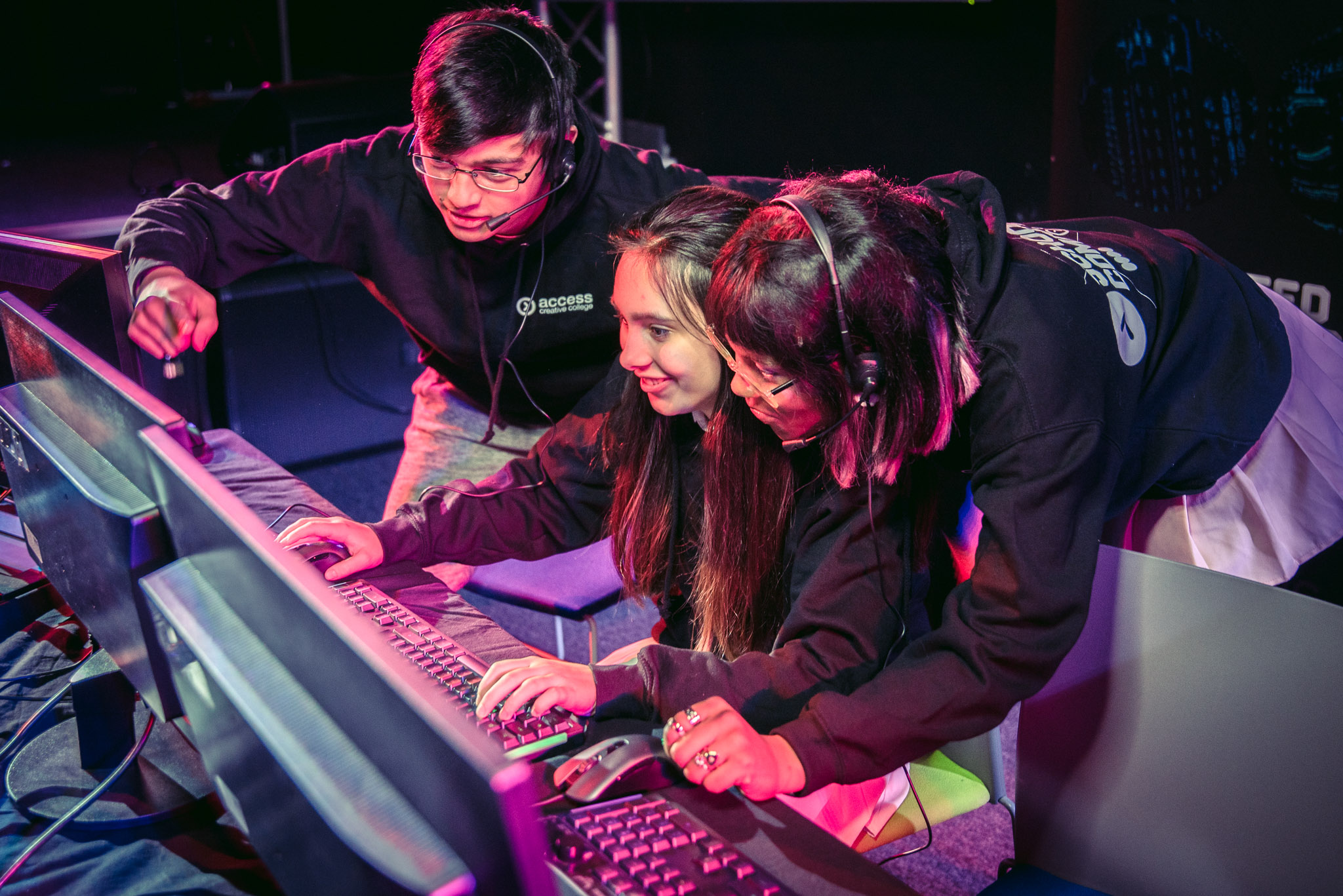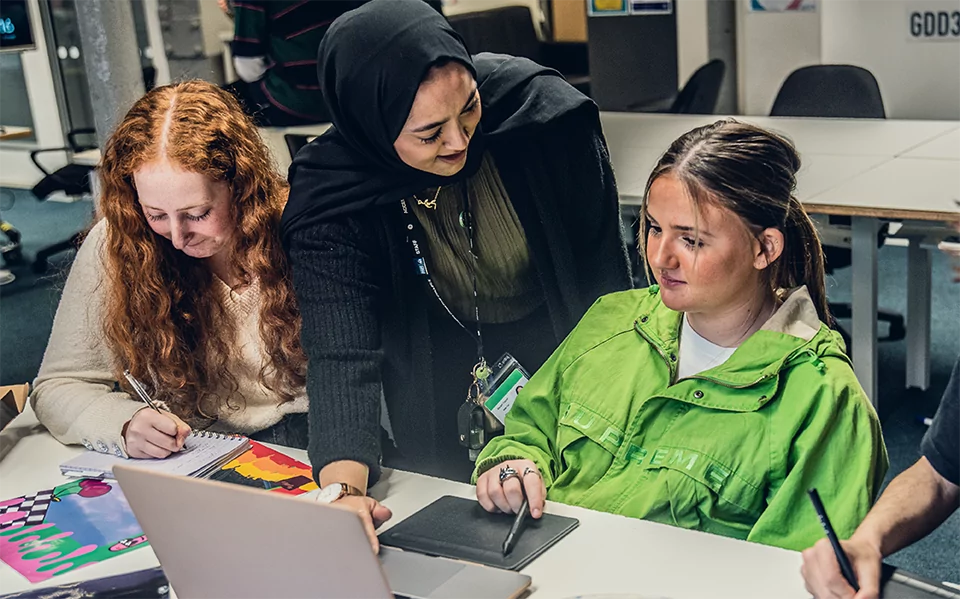A Day in the Life of a Photographer
































































































































































































Here at ACC, providing that new talent is of the utmost importance to us and we’ve created a series of bespoke curriculums to put you ahead of the competition But don’t take our word for it. Let’s hear from Guy Bramwell-Smith, Pathway Manager for Games at ACC Manchester, and CEO of SlingShot Studio, an amazing game studio that is a crucial part of our efforts to boost your career opportunities.
![]()
![]()
![]()
![]()
![]()
![]()
![]()
![]()


I’m Guy, Pathway Manager for Games at Access Creative College Manchester, as well as the CEO of SlingShot Studio. Originally I studied Mathematics at Salford University and was leaning towards being an accountant or working in insurance. My first full time job was in the insurance industry, but it wasn’t for me.
I only got into game development later on in my career. I have always been creative and loved video games, but I thought that games as a career wouldn’t be an option for me as there were no games courses when I was a student. I knew how to make games, because I learned how to code during my studies, when I was supposed to be studying for my exams. I was dabbling in Unity but it was just a personal passion.
Then an opportunity came my way that changed it all. I managed to get a short term contract working for Access Creative College as a freelancer in 2016, as part of their partnership with PGL. For six weeks over the summer, I delivered a bespoke, week-long course for young people at one of PGL’s resorts who preferred to be at a computer making games, rather than taking part in the rock climbing and other outdoor activities that PGL are known for.
I absolutely loved teaching people how to make games, and seeing their excitement when they got something working. I realised that even if I couldn’t be a professional developer myself, I would still enjoy helping young people become one.
I applied for full time work with ACC that same year, and although I was not ready for a full-time teaching position, they saw that I wanted to do it eventually, and brought me in for an administrative role. After a lot of hard work, I completed my teaching qualifications with ACC, taught GCSE mathematics, and worked my way up to being Pathway Manager for the Games at ACC Manchester. I also managed to pick up a BAFTA nomination for the Young Game Design (YGD) Mentor of the Year at the 2018 YGD BAFTAs for my efforts.
I love working at Access. It’s the creative outlet that I always wanted, even while working in insurance. The fact I didn’t have these opportunities when I was a student, drove me to make the course we deliver as creative and developmental as I could. Seeing how much talent our students have inspires me to improve my skills. Some of them are now even working in their dream jobs.
To go even further for the grassroots of the industry, I launched SlingShot in 2022.
![]()
![]()
![]()
![]()
![]()
![]()
![]()
![]()
SlingShot Studio is an independent game development company I started in November 2022, with some help from some of my most talented alumni. We’ve steadily grown into a 41 person strong, independent game studio, focusing on mobile and PC development.
Our workforce is mainly current ACC Games students who are motivated, talented, and driven to get into the game industry, and we aim to give them an entry route into their careers. We’ve already released our first game GO!Samurai on Android (out on iOS soon), with a PC game (Released in August or September 2023) and a second mobile game in the works. We’re planning to release three or four mobile games and one big PC release a year.


![]()
![]()
![]()
![]()
![]()
![]()
![]()
![]()
At Access Creative College, we provide all the skills necessary for learners to gain entry into the game industry and I think we are the best institute at doing that. However, the hardest hurdle for students to overcome in gaining entry to industry is that, regardless of the skills we develop in college, the most valuable thing to employers is work experience.
Due to the nature of the gaming sector, it has been very difficult sourcing said work experience. The vast amount of companies require non-disclosure agreements to be signed before anyone sees any work being created, which can only be signed once you are over 18. With ACC predominantly educating 16 – 18 year olds, this has been quite a significant barrier, which is why I created SlingShot Studio.
I decided I wanted it to be a company I could put my creativity into, but also provide initial industry experience for young talented creatives who need that first lucky break. SlingShot’s employees are now primarily ACC Games students.
![]()
![]()
![]()
![]()
![]()
![]()
![]()
![]()
I have an agreed partnership with Access Creative College to solely take on current students for SlingShot’s work experience programme. As I currently teach here, it is the ideal partnership for SlingShot, as I can teach them all the skills they require to work for the company.
We always give everyone a chance to prove themselves. Regardless of what skills someone has, or their background, if they can show that they are committed, they have a place at SlingShot. There is a stigma attached to the games industry, that it only caters to one particular demographic. I think we are making some good strides in this department because we have such a diverse group of talent that work for us, and it really shows that the game industry is for everyone.
![]()
![]()
![]()
![]()
![]()
![]()
![]()
![]()
Every ACC learner at SlingShot Studio has an official job title and role. This depends on their current skill set and the value that they can add to any of our products. Our recruitment model means some learners, mainly second years with more advanced skill sets, work on the higher end mobile and PC projects.
Newer ACC students with skills that are not yet developed enough for professional production start with testing roles, moving on to more tertiary tasks such as creating simple prefabs and assets. When their skills improve and they’ve had more training, we then assign them to shadow one of the more advanced employees helping out with the higher end programming or art related tasks. This process means we are consistently developing talent and skilled staff.
We incentivise them with work experience, but also provide commission based income, based on their attendance and contribution to each product. This has worked incredibly well, as they can see the benefit of punctuality, alongside developing their practical skill sets. The more committed they are, the more they can make.
![]()
![]()
![]()
![]()
![]()
![]()
![]()
![]()
To become a leading developer in the Northwest on all game platforms, as well as being a catalyst for change in the economic landscape. The UK has moved away from a production based economy to being a service based economy, primarily due to labour costs. However, we do have a great education system and a huge number of highly-skilled, creative young people.
With how quickly the game industry is growing, we are missing an opportunity to invest time and resources into creating a renaissance in production; using highly skilled creatives to develop the next generation of innovation in games. We have some amazing companies in Manchester, including TT Games, D3T, Cloud Imperium. It is the dream for SlingShot Studio to join them and help boost the wider UK game industry.
![]()
![]()
![]()
![]()
![]()
![]()
![]()
![]()
Access has been fantastic throughout the process of me building this company. At every point, everyone involved has been nothing but supportive. It is clear that ACC can see the benefit this opportunity has to learners and they have helped me every step of the way, from very kindly allowing SlingShot to use one of their buildings whilst in the incubation period to helping us market the brand, and offering support and advice. All of this is clearly aimed at boosting the experience of their learners and has led to a formal partnership between SlingShot Studio and Access Creative College.
As stated above, all ACC students will leave us with professional, purchasable products in their portfolio, which is something that no-one can take away from them. The employment opportunities that come from experience like this, pre-university, will be massive.
In terms of how their contribution helps SlingShot, due to the high standard of teaching at Access Creative College, I have a wealth of talented young creatives who have the skills and willingness to learn that are perfect for SlingShot. These students help us to continuously develop products, and keep the company moving forwards. It really is a win-win for everyone involved.
Are you passionate about games and gearing up for a career in industry? Get a helping hand from ACC and SlingShot, with one of our cutting-edge games courses. Check out what’s on offer here.









